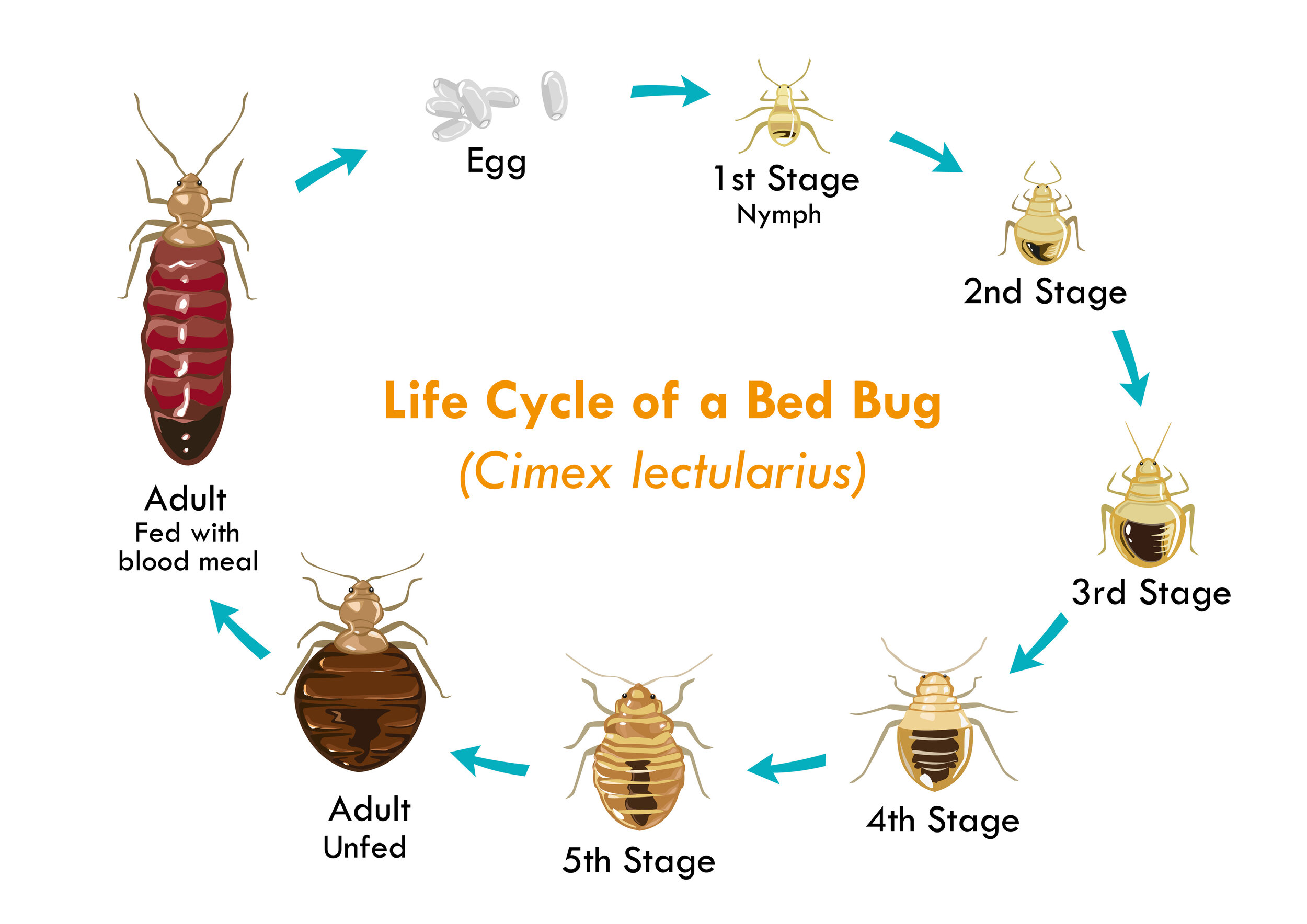Understanding the Lifecycle of Parasites for Targeted Control Methods
Understanding the lifecycle of pests is a basic aspect of reliable bug management approaches. By comprehending the various phases of development that parasites go through, a more accurate and targeted approach can be embraced to control their populaces. This knowledge not just clarifies the susceptabilities within the insect lifecycle yet likewise leads the way for applying tactical measures that can disrupt their development and reproduction cycles. Via a deeper understanding of exactly how pests prosper and evolve, tailored control approaches can be developed to resolve particular factors in their lifecycle, ultimately causing even more effective parasite management results.
Relevance of Understanding Pest Lifecycle
Comprehending the lifecycle of bugs is crucial for developing effective and targeted control techniques in bug administration. By understanding the numerous phases a parasite undergoes from egg to grownup, pest control professionals can identify susceptible points in the lifecycle where intervention can be most successful. For example, understanding when larvae are most active can assist figure out the ideal timing for using larvicides. Furthermore, comprehending the life expectancy of an insect species can aid in predicting population growth patterns and possible problem threats.
Moreover, identifying the details ecological conditions necessary for each and every phase of the insect's lifecycle can guide choices on environment modification or exemption techniques to lower and interrupt the lifecycle insect populaces. This understanding allows pest management specialists to execute proactive procedures instead of counting exclusively on reactive therapies, resulting in even more lasting and long-term parasite control services. Inevitably, a complete understanding of insect lifecycles encourages insect control practitioners to customize their strategies properly, reducing ecological impacts and making best use of control results.
Trick Stages in Bug Development
To successfully implement targeted control methods in pest administration, a critical aspect depends on adequately identifying and comprehending the vital phases in pest development. Bug advancement typically consists of a number of vital stages that are important for their lifecycle and monitoring. The initial stage is the egg stage, where bugs lay eggs that later on hatch out right into larvae. Larvae then progress into pupae, a phase where they undertake transformation prior to becoming adult insects. Comprehending these phases is crucial as it aids in pinpointing susceptible points in the lifecycle where control procedures can be most efficient.

Vulnerabilities in Pest Lifecycle
Throughout the various stages of a bug's lifecycle, distinct vulnerabilities arise that can be purposefully targeted for effective control procedures (A1 Bed bug Exterminator houston). One important vulnerability lies in the egg stage, where bugs are often much more prone to particular pesticides or biological control agents due to their soft outer shell, making them much easier targets for treatment. Understanding these vulnerabilities in the insect lifecycle is necessary for creating efficient and accurate control methods that properly take care of pest populations while minimizing environmental impact.
Executing Targeted Control Procedures

Implementing targeted control steps commonly involves a multi-faceted method. This might consist of habitat adjustment to make the atmosphere much less hospitable to insects, such as eliminating standing water for insect control or securing entry points for rodents. Furthermore, organic control approaches can be utilized, where natural predators or microorganisms are presented to maintain pest populations in check.
Chemical control, such as the cautious application of chemicals, is an additional usual strategy. It is necessary to make use of these materials deliberately to decrease ecological influence and possible injury to non-target varieties - A1 Bed bug Exterminator houston. Integrated Insect Management (IPM) techniques that combine various control measures in a coordinated and sustainable fashion are often one of the most reliable in attaining long-lasting bug administration goals. By implementing targeted control measures based upon a detailed understanding of parasite lifecycles, bug populations can be efficiently controlled while minimizing threats to human health and wellness and the atmosphere.
Boosted Insect Administration Practices

Additionally, the unification of biological control representatives, such as natural killers or microorganisms of parasites, can assist lower reliance on chemical pesticides and advertise a more well balanced community. Applying physical barriers and catches can also belong to boosted insect monitoring practices, using non-toxic and targeted options for parasite control. Additionally, using pheromones and other semiochemicals can interfere with pest mating patterns and communication, bring about reduced bug populaces in time.
Final Thought
Finally, comprehending the lifecycle of bugs is crucial for efficient bug management techniques. By determining vital stages in insect advancement and susceptabilities in their lifecycle, targeted control measures can be executed to lessen parasite populaces. Enhanced insect administration techniques can aid reduce the reliance on broad-spectrum pesticides and promote more eco friendly and sustainable pest control methods. This understanding plays a crucial function in keeping healthy and balanced ecological communities and agricultural productivity.
Understanding the lifecycle of bugs is important for developing reliable and targeted control approaches in parasite monitoring. By comprehending the various stages a parasite goes via from egg to grownup, insect control professionals can identify at risk factors in the lifecycle where intervention can be most successful. Inevitably, a detailed understanding of bug lifecycles equips pest control practitioners to customize their methods efficiently, making the most of and minimizing ecological impacts control end results.
By carrying out targeted control steps based on a thorough understanding of parasite lifecycles, insect populations can be successfully controlled while decreasing dangers to human health and the atmosphere.
By identifying vital stages in parasite advancement and susceptabilities in their lifecycle, targeted control procedures can be implemented to lessen pest populaces.